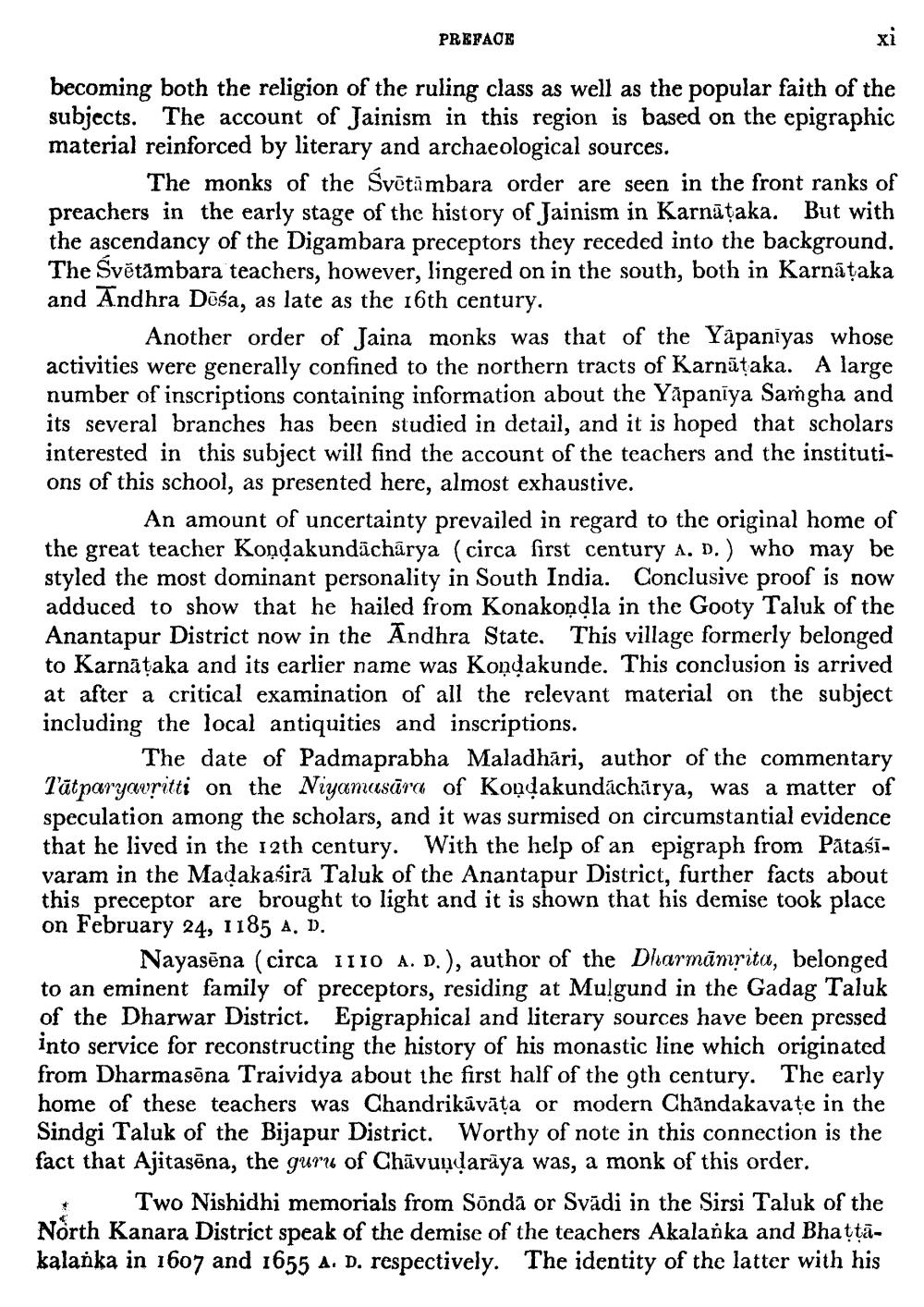________________
PREFAOE
becoming both the religion of the ruling class as well as the popular faith of the subjects. The account of Jainism in this region is based on the epigraphic material reinforced by literary and archaeological sources.
The monks of the Svētāmbara order are seen in the front ranks of preachers in the early stage of the history of Jainism in Karnataka. But with the ascendancy of the Digambara preceptors they receded into the background. The Svētāmbara teachers, however, lingered on in the south, both in Karnāțaka and Andhra Dośa, as late as the 16th century.
Another order of Jaina monks was that of the Yapaniyas whose activities were generally confined to the northern tracts of Karnātaka. A large number of inscriptions containing information about the Yapanīya Saṁgha and its several branches has been studied in detail, and it is hoped that scholars interested in this subject will find the account of the teachers and the institutions of this school, as presented here, almost exhaustive.
An amount of uncertainty prevailed in regard to the original home of the great teacher Kondakundāchārya (circa first century A. D.) who may be styled the most dominant personality in South India. Conclusive proof is now adduced to show that he hailed from Konakoņdla in the Gooty Taluk of the Anantapur District now in the Andhra State. This village formerly belonged to Karnāțaka and its earlier name was Kondakunde. This conclusion is arrived at after a critical examination of all the relevant material on the subject including the local antiquities and inscriptions.
The date of Padmaprabha Maladhāri, author of the commentary Tātparyavritti on the Niyanasūra of Kogdakundáchirya, was a matter of speculation among the scholars, and it was surmised on circumstantial evidence that he lived in the 12th century. With the help of an epigraph from Pataśīvaram in the Madakasira Taluk of the Anantapur District, further facts about this preceptor are brought to light and it is shown that his demise took place on February 24, 1185 A. 1).
Nayasēna (circa 1110 A. D.), author of the Dharmānrita, belonged to an eminent family of preceptors, residing at Mulgund in the Gadag Taluk of the Dharwar District. Epigraphical and literary sources have been pressed into service for reconstructing the history of his monastic line which originated from Dharmasõna Traividya about the first half of the gth century. The early home of these teachers was Chandrikávāta or modern Chandakavate in the Sindgi Taluk of the Bijapur District. Worthy of note in this connection is the fact that Ajitasõna, the guru of Chāvuņdarāya was, a monk of this order.
Two Nishidhi memorials from Sõndā or Svādi in the Sirsi Taluk of the North Kanara District speak of the demise of the teachers Akalanka and Bhattākalanka in 1607 and 1655 A. D. respectively. The identity of the latter with his




